This goes out to all the dreamers who have dreamt of permanent creative maker spaces in the Bay Area. While the fabric of The Bay Area’s artistic communities has repeatedly been at risk of being pushed out, a newly formed space called Seaport Studios in Richmond is here to stay. This thriving community of artists and makers has put down permanent roots and hopes their story will inspire more folks to keep the dream alive. Effectively they said to the Bay Area: the arts are here to stay.

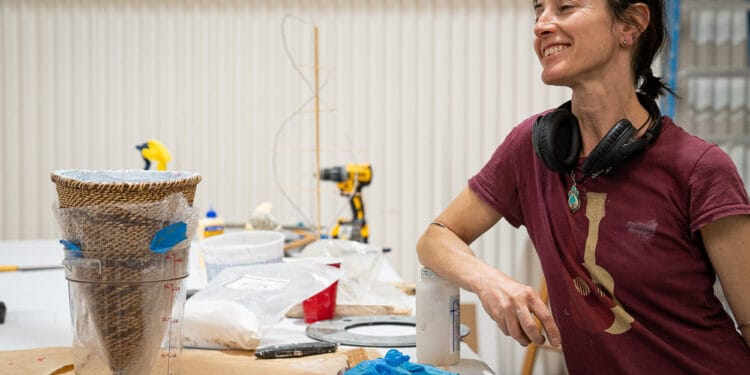

Beyond the enormous and awe-inspiring art cars and large art structures, the most amazing part of Seaport is its interconnected creative community which has fabricated their own nest where artistic talent can thrive. These folks share tools, rely on each other, and share advice freely to encourage each other to always continue to grow as an artist. All of this only strengthens the bonds of the community at Seaport.The foundation of a strong community was built long before the move to the space in Richmond. They’ve known each other for years and eventually, they made a very strong and intentional next step: they bought their own space. For the industrial artist community this is especially a huge win for their them as this place is perfect for fabrication, creation of large projects and experimentation.
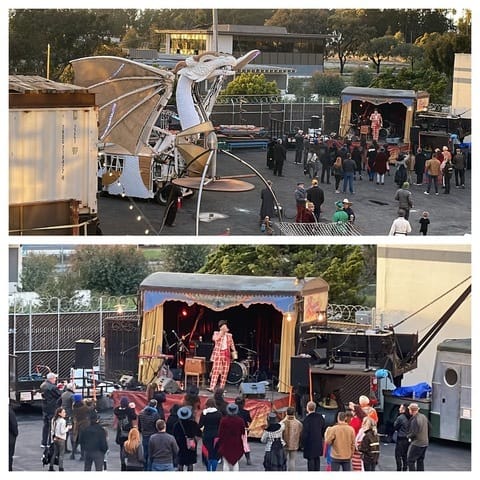
Recent event in a courtyard lot located in front of Seaport Studios
“If you can afford it and the right place comes along, do it. Purchasing your own place will allow you to build security for your art business, and help you to build equity. Historically, Artists will move into a neighborhood, make it cool and interesting, and then get pushed out in exchange for higher rents or development. Imagine if more Artists could own their spaces, build security, and set down roots within the community,” says Sean Orlando – owner, maker, and Creative Director at Seaport Studios.Seeing the need for more permanent art studio space, Seaport was purchased by some of the artists that occupy the space. Orlando gathered a group of 7 investors to create an LLC filled with folks who believe deep within their souls that The Bay Area needs permanent spaces for artists and makers.
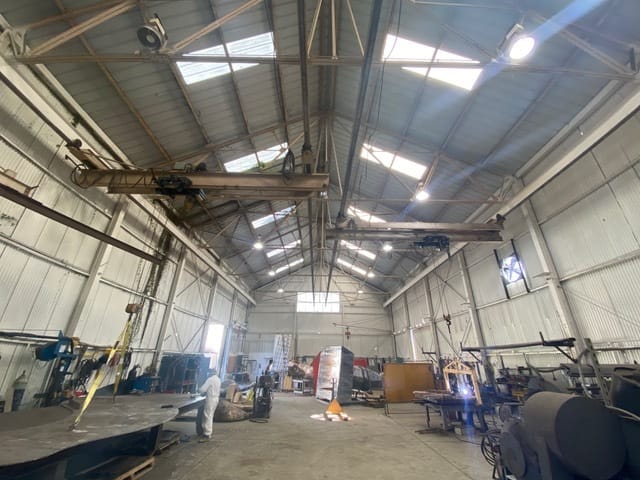
Inside Seaport Studios prior to artists moving in
Though the LLC worked together to fund the project, it wasn’t easy to obtain the space. After nearly a year, they found an ideal warehouse space which was previously used as a foundry: tall ceilings, bridge cranes, space for large projects to be built and plenty of rooms for other needs such as quiet co-working, photo studios, a small gallery, and conference rooms.
Orlando explains, “It took almost a year to close escrow after we went into contract, the landlord of the space we were moving out of doubled our rent for the remaining 4 months that we were there, and there were existing tenants in the new space that we had to negotiate with. It was the most intense experience I’ve ever had to put up with, but we had an incredible Realtor, Tania Seabock, who helped us to navigate everything and see us through to the other side. In the end… I get to play a critical part in securing permanent creative art studios in the Bay Area for an incredible arts community!”
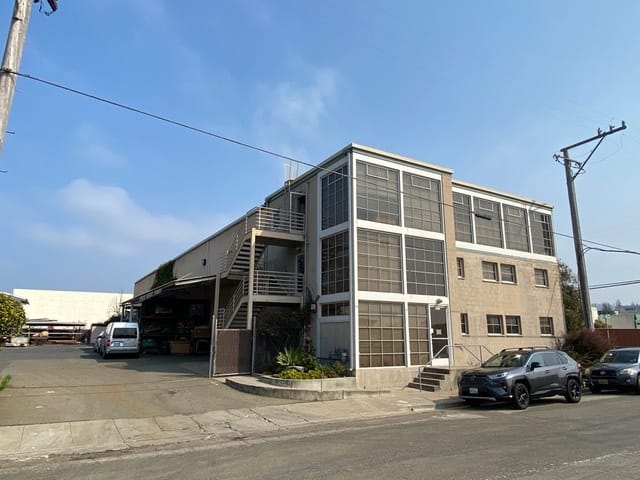
View of Seaport Studios from the street
MEET SOME OF THE SEAPORT STUDIO MAKERS:
Walking through Seaport you will find studios for nearly every type of maker: blacksmiths, fabricators, woodworkers, photographers, painters, sculptors… you name it. I joked with Orlando that a person could walk into Seaport with a project they need help with, no matter how crazy of an idea, the folks at Seaport can make it.
I think the only way you can really see what Seaport is all about is to meet the makers: all professional artists. I asked each artist I ran into that day a little bit about themselves and what advice they would give an artist who wants to “make it”. My hope is that their answers will help folks feel inspired and a little encouraged to keep following their own dreams and continue to pursue a life as an artist… knowing that it’s still possible in The Bay Area to be a working artist.
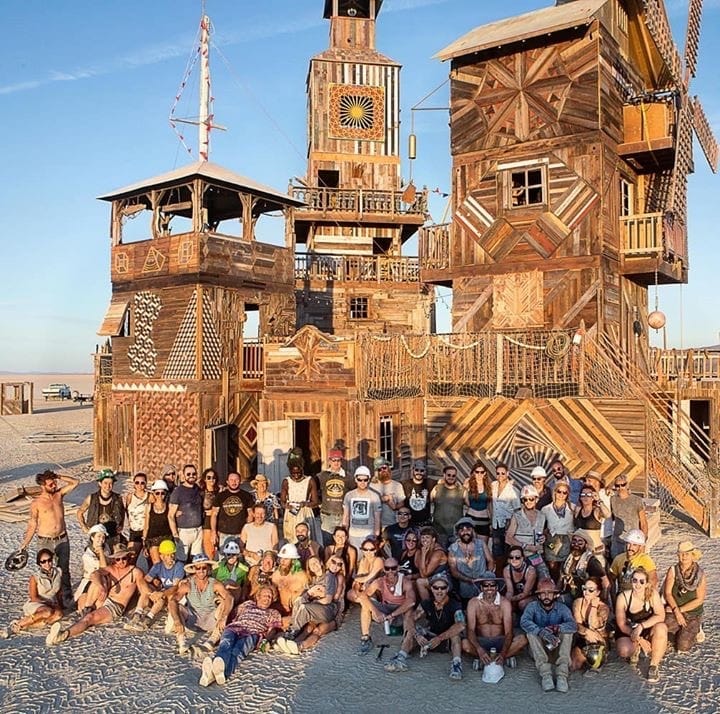
Large wooden windmill structure made by Stephanie Shipman and others within her community
Stephanie Shipman- Woodwork, fabrication, and design IG: @andibuiltitwithmyvagina WEB: andibuiltitwithmyvagina.com
Stephanie has been working in the Bay Area for over 18 years. But she’s been a builder since she was a teen. Eventually, she studied set design in college and even worked with the Berkeley Repertory Theatre Scene Shop. “In 2009, I started getting involved with the Burning Man big art scene and joined the ranks of Five Ton Crane. I’ve built a number of projects with that crew, including being lead carpenter on The Capitol Theatre, which was commissioned by the Smithsonian’s Renwick Gallery for the No Spectators show in 2018. I’m also part of the Folly Builders, and built the Man at Burning Man from 2014-2016,” recalls Stephanie. Now, she works on commissioned pieces and has workshops coming up this spring through: And I Built it With My Vagina.
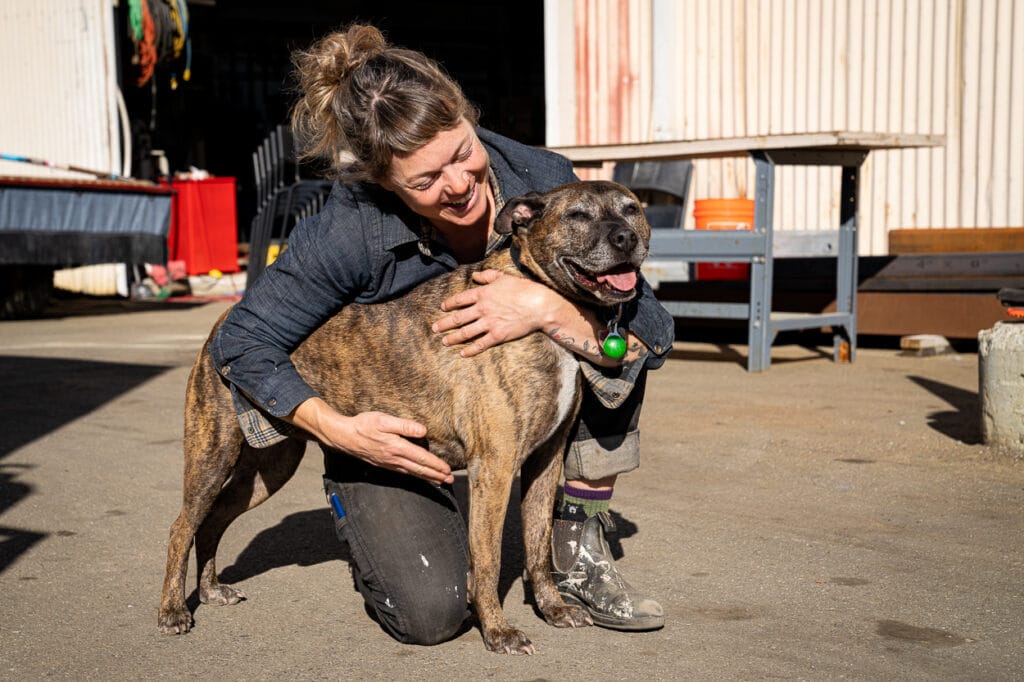
Stephanie Shipman and her trusty assistant – photo by in-house photographer Ronny Preciado
Shipman’s advice to aspiring artists:“Patience!! Even when a person has natural talent and drive, it still takes time to hone your craft. I remember when I was first starting after college and thinking I knew everything. Then you meet people who have been building and working for 10, 20, 30 years and realize there’s ALWAYS more to learn, you can always improve, you can always get faster (or slow down, which is also a thing you have to learn!!),” encourages Stephanie.
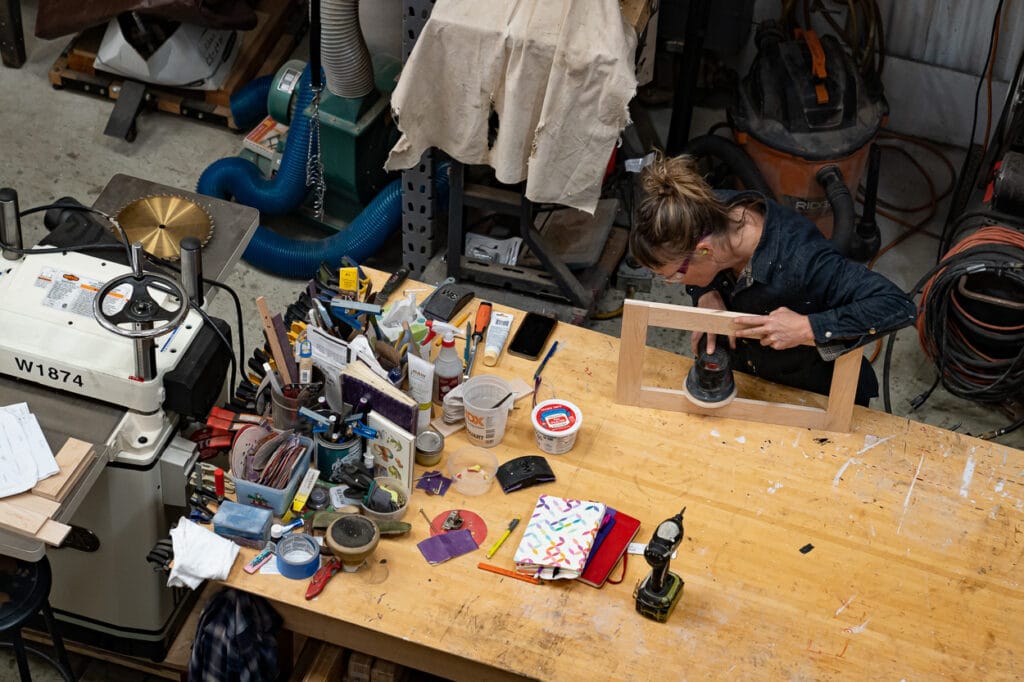
Shipman working in her studio – photo by in-house photographer Ronny Preciado
Brian Enright – Sculpture, Industrial Reuse Design IG: @enrightsculpture WEB:EnrightSculpture.com
Enright works with metal and found objects to create sculptures that teach us “about the interconnectedness of all life, our actions and the law of cause and effect,” says Enright. His current work envisions and creates new mythology around our relationship to single-use trash in our world.
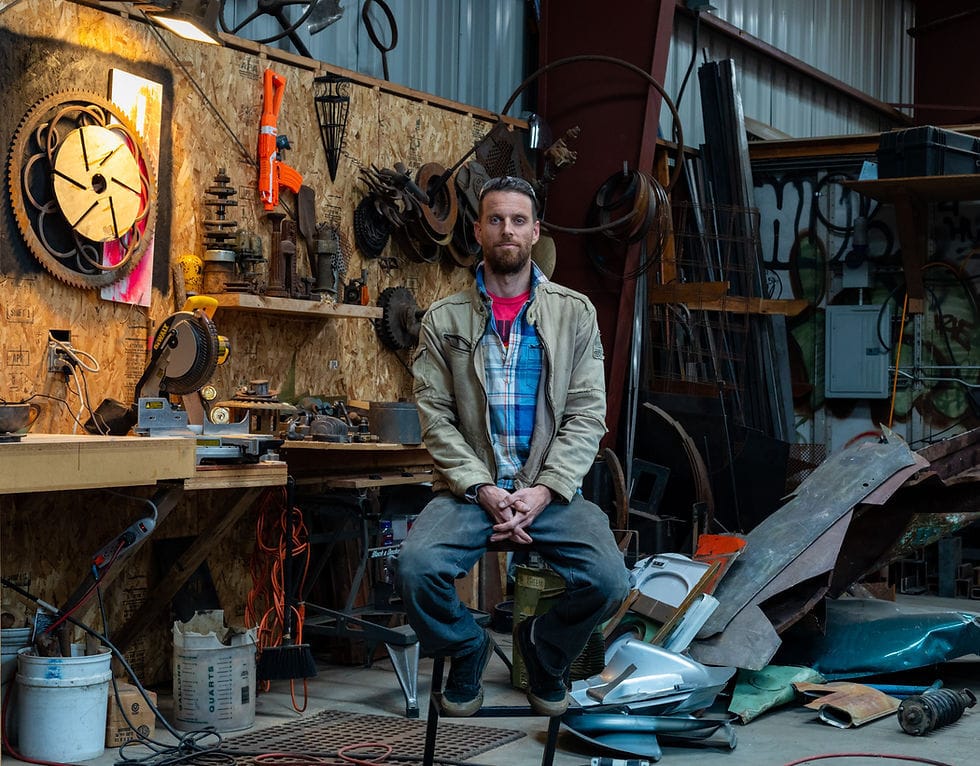
Portrait of Brian Enright in his shop space – photo by Jahsaudi Perkins
Enright went from a career in UX/UI to a master sculptor:“My first career was in UX/UI back in the early 2000’s, but I was unsatisfied with the fact that even though the tech industry wasn’t doing anything “bad” for the environment, we weren’t doing anything good either… In 2006 I left my job, went to Alaska and lived at the end of a 66 mile dirt road working as a mountaineering guide. Out there “reuse” was not yet a term, it was just a way of life as there was a cost to get anything down the road, and a cost to take it back out. So anything of utility stuck around, and metal was definitely one of those things that everyone would keep and use again.
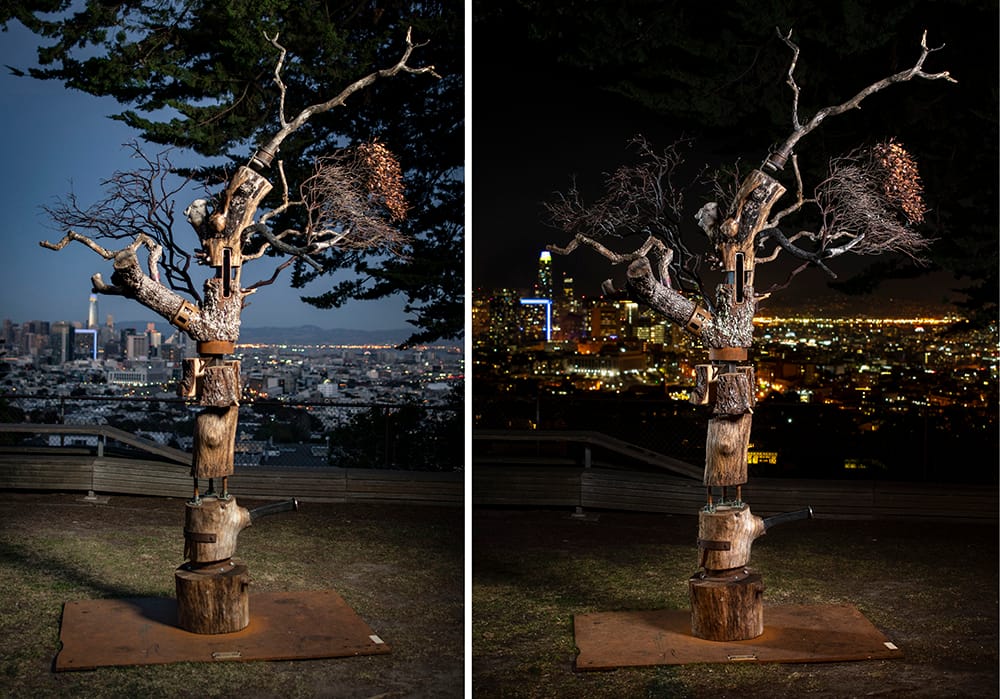
Portrait of Enright’s latest piece “Re:Tree” photo by in house photographer Thom Puhek
When I came back from Alaska I took my first class in metal at The Crucible with a specific project in mind using a car chassis. The instructor was awesome and didn’t tell me that it was ambitious for my first project in metal. He just said, “let’s learn to weld first.” So we did and I ended up changing gears and building a few different table designs that I came up with. One, an end table created from a structural iBeam and glass, an older woman in the class saw and told me that she would buy it from me as soon as I completed it! I told her my story and she told me that I had found what I was supposed to do. It was the exact encouragement that I needed to keep going,“ says Enright.
Sean Orlando – Creative Director, artist IG: @engineered_artworks WEB: www.engineeredartworks.com & www.fivetoncrane.org
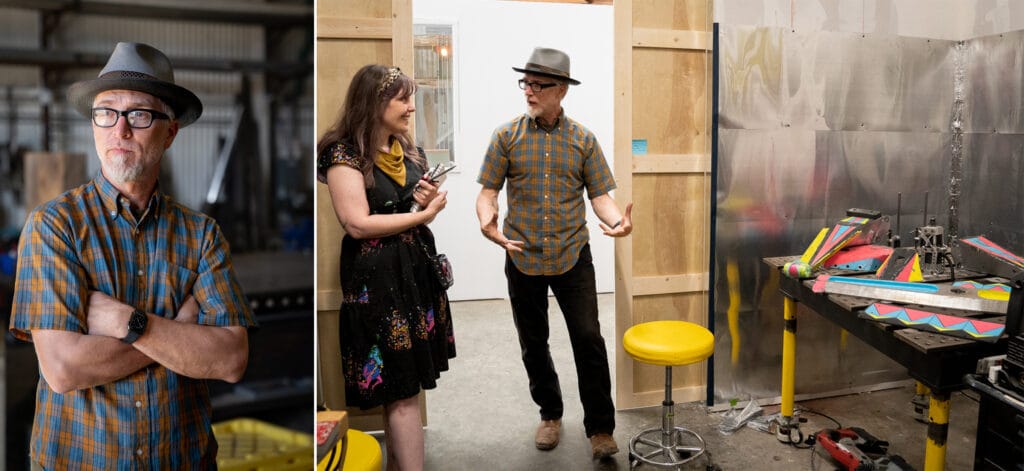
Sean Orlando (left) – Sean showing Katy around the studio (right) – photos by in-house photographer Ronny Preciado
“I have been living in the Bay Area for 25 years. I moved to Oakland from New York when I was 20 and I’ve held a number of jobs over the years while I forged my own path as a Professional Working Artist (PWA). I’ve done my best to pursue a career path that would give me the highest level of personal satisfaction within my day-to-day. (Tower Records, Snapfish, Lahue & Associates, The Crucible, Chabot Space & Science Center, The Exploratorium),” states Orlando.
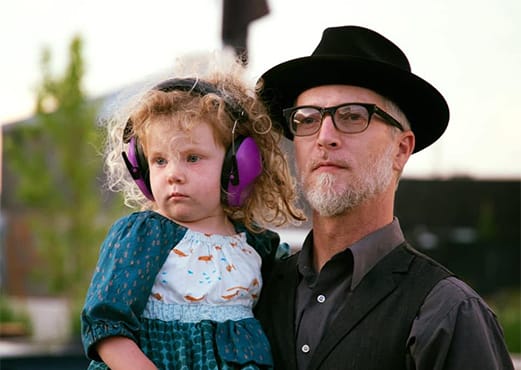
Sean Orlando stands with curly haired adorable “assistant” in safety gear
Orlando’s skills are vast and wide. He dreams up something and makes it happen. He is a large-scale installation artist who makes public art which is immersive, interactive, kinetic, LED Art, Fire art, and often digital – He calls his work “Engineered Art”. Beyond his success as an artist, Orlando has always had a passion for nurturing creative spaces. It’s here at Seaport that he continues to foster that strong bond between himself and the makers within the community.
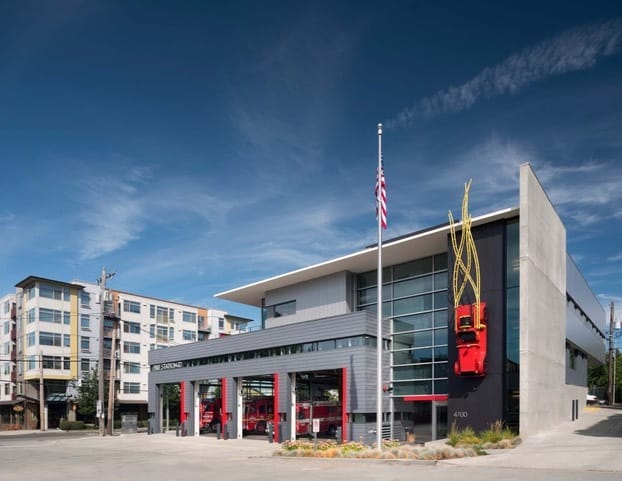
Seattle fire station with imaginative elements designed by Sean Orlando
Orlando’s advice to aspiring artists:“Regardless of what the world tells you… being an Artist IS a viable career path. You may have to hold up a Day Job, while you establish yourself as a PWA, but when the time comes, don’t be afraid to take that leap of faith and follow your dream. It’s important to develop good business skills and to make connections with as many other artists and art supporters as you can. Build a network, take chances, follow your dreams, and don’t be afraid to fail. Forge your own path and find your people. Most important… If you’re able, own your own space. If you can purchase the studio or building that you work out of, then you will never have to cope with the whims of a Landlord who wants to unreasonably increase your rent or evict you… and you’ll end up building equity and security for yourself and your business,” says Orlando.
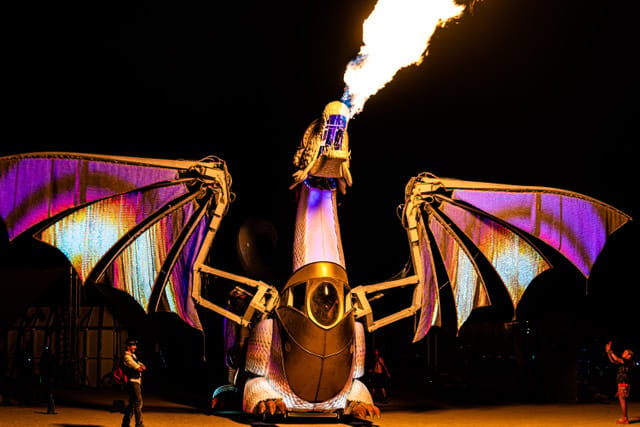
A team of 40 artists worked on this privately commissioned piece by Engineered Artworks and Sean Orlando – photo by Nathanael Zamir
Cjay Roughgarden – Metal artist and fabricator IG: @smoothgarden WEB: cjayroughgarden.com
Cjay is fabricator who takes commissions for architectural work, fire pits, sculpture, and art. She’s skilled in all things welding. “Making things that are functional and beautiful brings me joy,” says Roughgarden.
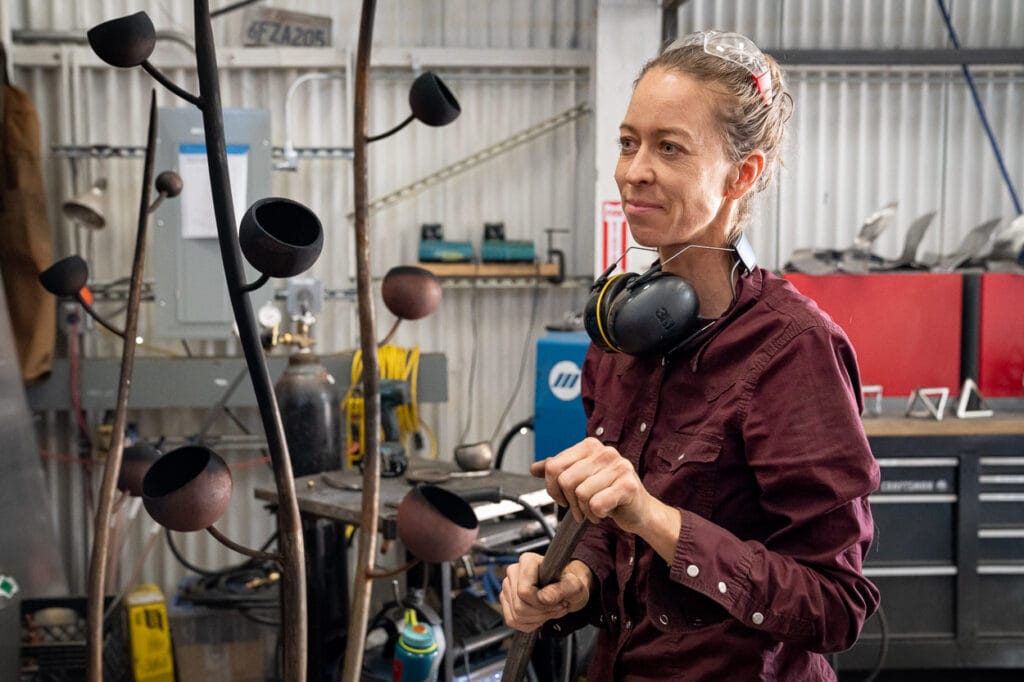
Cjay Roughgarden stands in her studio space – portrait by in-house photographer Ronny Preciado
Roughgarden advises those who want to do what they love for a living, “If it’s purely artistic- don’t rely on it for income until you’ve proven it works. It may cost your evenings and weekends but keeping a day job gives you the leeway to experiment and see where there’s an overlap between what you want to do and what the market wants from you. Things I made on a whim or as gifts have sometimes become the most successful art pieces and products, while things I planned to be my masterpieces never came together. If you do something that’s been done before and you’re just making your special brand of it, this may be less relevant, but for the truly groundbreaking and unusual you have to give yourself room to explore, to throw things at the wall and see what sticks and what people want from you. The feedback loop is a guidance system for what to refine and develop, so you have to put yourself out there early, and not be too focused on the money right away.”“For getting into a trade – quit your day job – go for it – and know that putting in the hours is the only shortcut. Build a network, find things to collaborate on, and different people to work for. The flavor of the work will really be affected by the type of people you are around, especially at first. Had I fallen into a different crowd I might not have thought this was a good career at all. If you’re a little older- I was 30 when I went into the trades- be prepared to feel ridiculous for the first year or two. How could I be this old and not know this basic stuff I would think? But my generation had shop classes taken out of school, and we’ve all been taught to be middle management- not competent makers. Know that if you keep focused you can and will figure it out.”

Fire sculpture by Cjay Roughgarden
Celeste Flores – Blacksmith and artist IG: @Clay_And_Steel WEB: ClayAndSteel.com
Flores is an artist blacksmith who creates decorative architectural work designed in collaboration with homeowners.
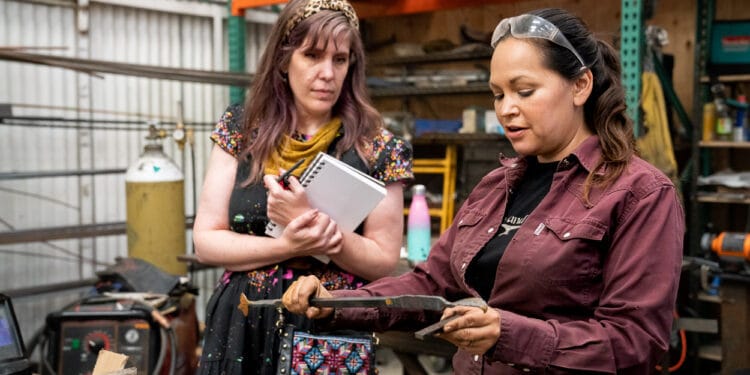
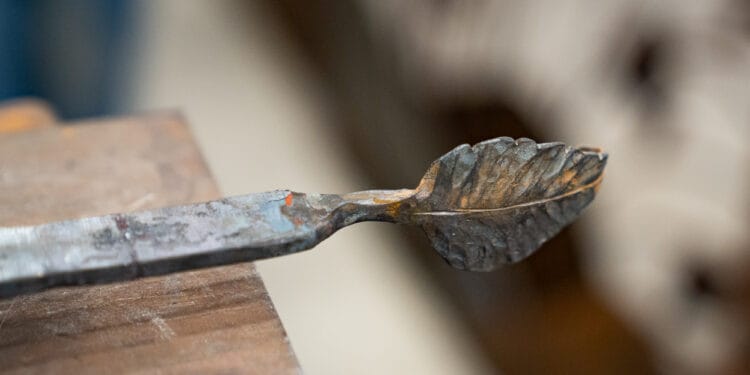
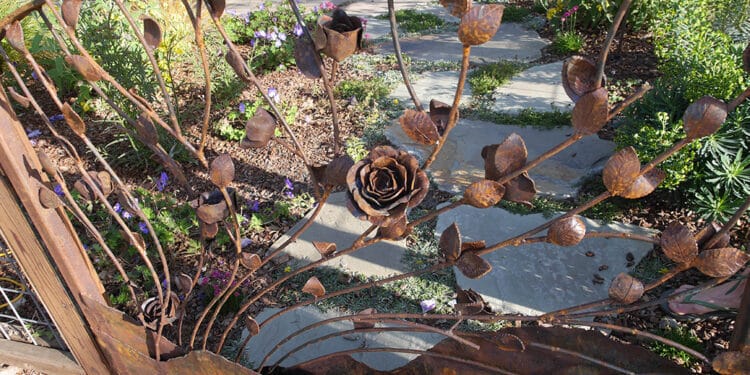
Flores’ advice for aspiring blacksmiths:
“First off, it’s not an easy path, so prepare yourself. Build up your valuable creative skills and learn as much as you can about running a business. Start small and invest in your business as you go. And for those creatives who have the same flaws as me, set good boundaries and value yourself! You deserve to be paid well for your hard work.
One other thing that someone told me, when I needed to hear it. No one is going to know what you and your business need better than you. Trust yourself when making informed decisions,“ says Flores.

Celeste Flores with torch
WHAT’S NEXT FOR SEAPORT STUDIOS?
This is a story about a group of talented people who saw that in order to find a permanent home for their art businesses, they had to go all in and get a space on their own. It’s a story about how what you can dream, you can build. It’s about community and how being able to lean on each other builds opportunities for the whole community.As an artist, Bay Area local, and journalist; I’m constantly hearing about artist evictions. For most artists, it has made people wonder if there is a place here for their own art anymore. Going to meet all of the artists at Seaport Studios, I felt this overwhelming sense of hope. Like the arts are still here if you look for it. Like there are people here preserving the arts by providing resources for artists to thrive in.
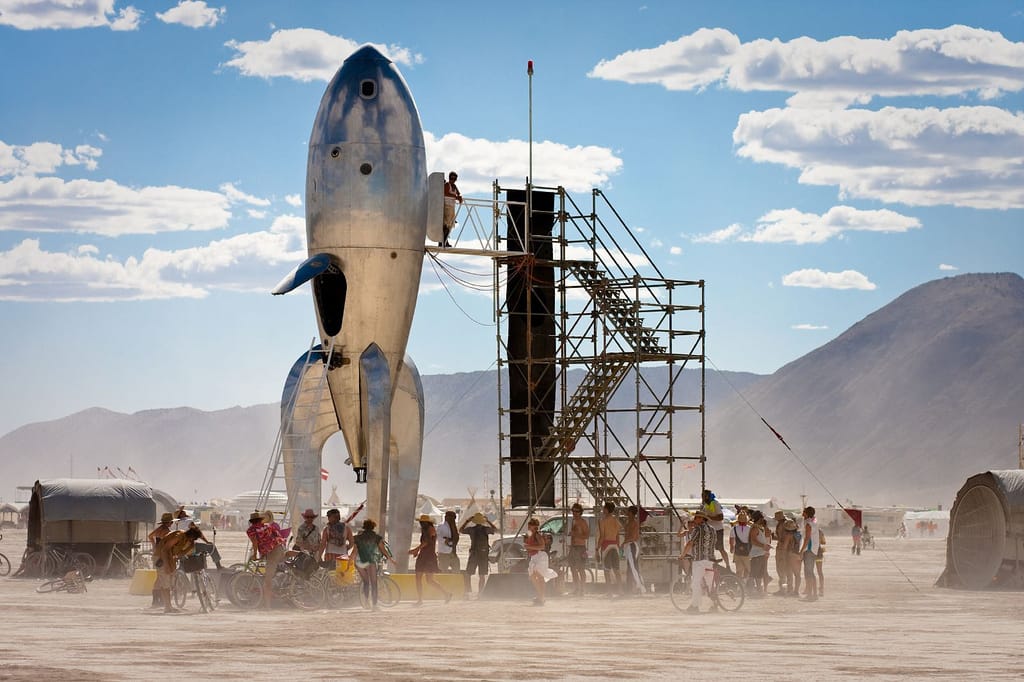
Raygun Gothic Spaceship at Burning Man – made by FiveTonCrane (several Seaport artists are part of this group)
Seaport will be hosting regular events such as open studios, gallery shows, free workshops and other types of events. Through these events, I can see the fostering of an even more interconnected community within The Bay Area art scene. Bringing people together within their space will undoubtedly bring more hope : more people who can see working artists succeeding and feel like it’s attainable. We can all rejoice in the fact that The Bay Area still has artists in it and the narrative that artists aren’t here anymore isn’t necessarily true.To learn more about Seaport Studios, please visit their website and Instagram:www.seaportartstudios.comhttps://www.instagram.com/seaportartstudios/
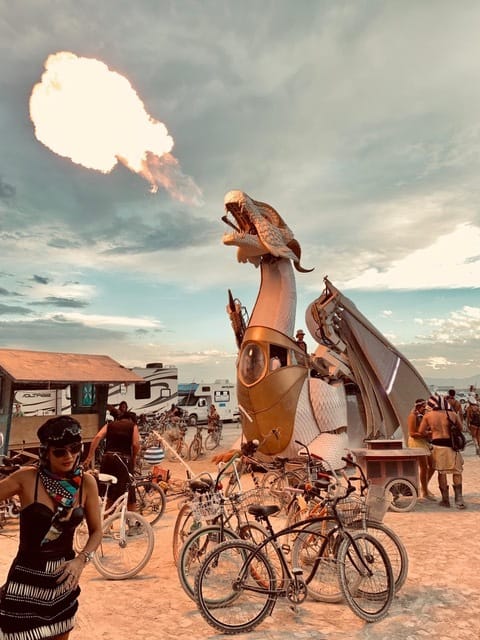
Dragon breathing fire on the playa
The post A Permanent Home For Artists: Seaport Studios appeared first on Broke-Ass Stuart's Website.








